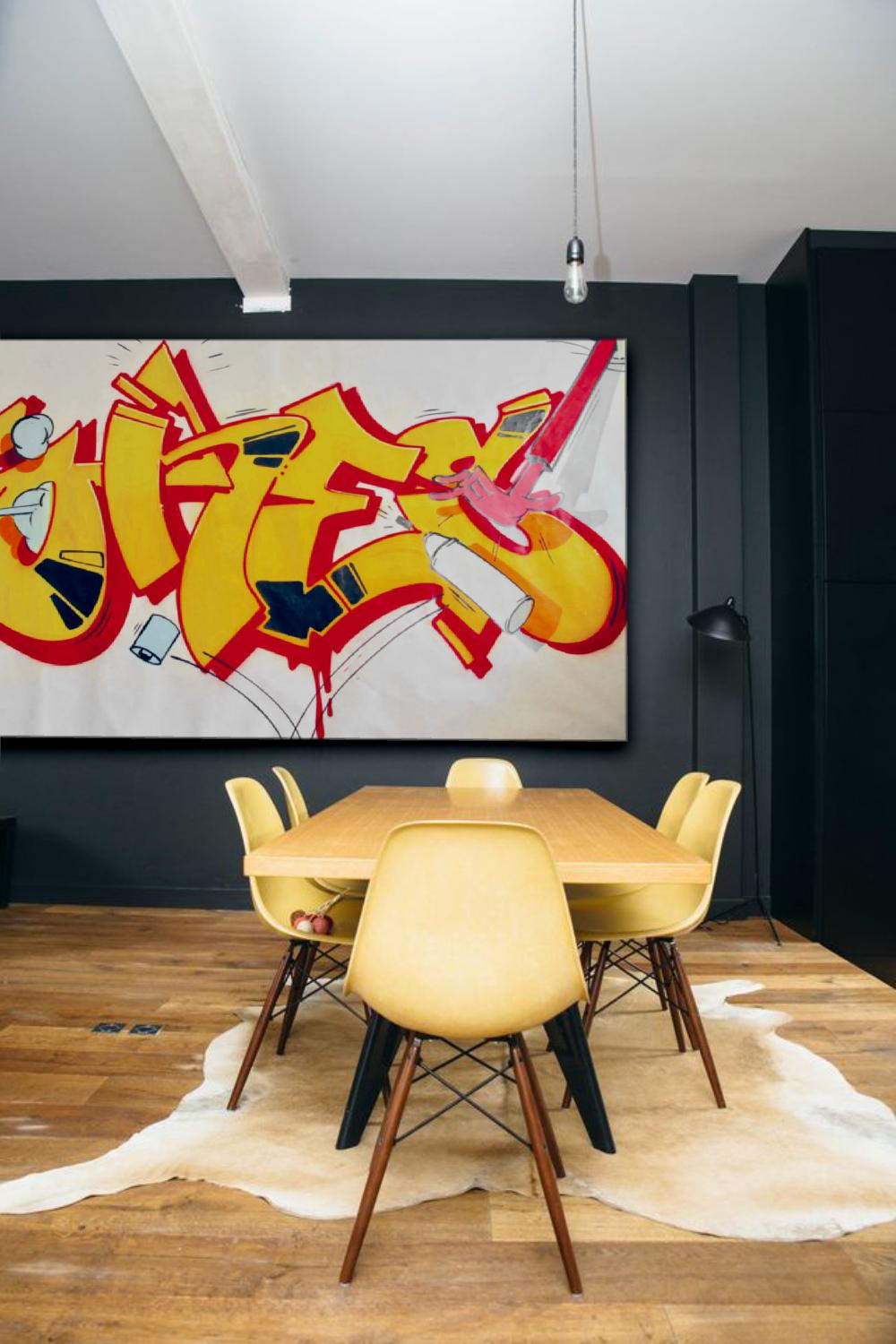
Highlighting a painting in your decor, pro tip no. 2
To embellish your interior or complete your collection of canvases already hanging on the wall, it is important to choose the location of your canvas carefully. And this depends first of all on the size of your work... to find a wall of suitable size.
Contrary to popular belief, a large canvas does not necessarily need a gigantic wall.
For small canvases, it is true that we generally do not let them get lost on a large wall. Unless you are planning to create a collection of small formats in this place. It will be easier to find a place for it on a small section of wall: above a chest of drawers, a wall return, between a window and a door or between a door frame and a bookcase.
For a large canvas, you have three options:
1) You can choose to keep a lot of visible wall space around the work. For this, you will need a wall that is all the larger the larger the work. You will need to position the work in the center of the wall and the center of the canvas at a level that is pleasant for viewing, generally at eye level. This is an arrangement that makes the work unique and draws all the attention to it.
2) You can also choose to keep little visible wall space all around the work. If this space is sufficiently proportional around the perimeter, it will give the effect of a natural frame. At OUT SIDE ART, this is often the case with our "small" ;) Maxi-formats, which measure approximately 2.5 meters wide and 1.4 meters high.
3) For even larger canvases - at OUT SIDE ART these are our pure Maxi-formats that measure more than 4 meters long! -, we can quite easily create a hanging that covers the entire wall. To do this, you will have to be careful not to encroach on door frames for example, this would give a poor finish to the hanging and the general effect would be much less aesthetic. You can perfectly cover the wall from the ceiling to as low as the canvas goes. This will create a base effect that will reveal the power of your new acquisition.
